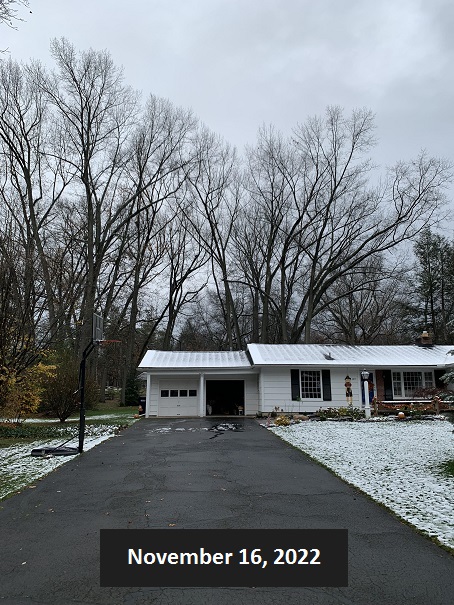Thanks for joining us today as we continue to examine and respond to Catholic apologist, Karlo Broussard’s book, “Meeting the Protestant Response” (2022). This week, Broussard opens his second of three short chapters defending baptismal regeneration, this time using Acts 2:38 as his proof-text:
“And Peter said to them, “Repent and be baptized every one of you in the name of Jesus Christ for the forgiveness of your sins, and you will receive the gift of the Holy Spirit.”
Catholics present Acts 2:38 as incontrovertible evidence for baptismal regeneration.
Protestant Response #26: “Baptism is not the cause of salvation but rather follows it.”
Writes Broussard, “(Evangelical apologist) Ron Rhodes bases this argument on a particular reading of the Greek preposition eis, translated as ‘for’ [regarding the “for” in Acts 2:38, “…for the forgiveness of your sins” – Tom]. Rhodes rightly points out that eis ‘can indicate causality (‘in order to attain’) or a result (‘because of’)’. An example of this causal sense is, ‘I’m going to the office for (in order to get) my paycheck.’ An example of the resultant sense is, ‘I’m taking an aspirin for (because of) my headache.’ Rhodes asserts that in Acts 2:38 eis is used in the resultant sense: Peter is not saying, ‘Repent and be baptized in order to attain the forgiveness of sins’ but rather, ‘Repent, and be baptized because you’ve been forgiven.’ Rather than baptism being a cause of salvation, it’s something we do once we’re saved” (author’s emphases).
Broussard’s response
Broussard’s response is lengthy and multifold, so I will summarize using bullets:
- Broussard dismisses an interpretation of eis in Acts 2:38 in the resultant sense as an arbitrary manipulation that flouts context. Broussard notes that Protestants appeal to Acts 10:47 (see Acts 10:44-48 for the wider context), which describes the sequence of 1) Cornelius and his gathered relatives and close friends hear the Gospel from Peter, 2) the Holy Spirit came upon them, and they manifest the gift of languages, and 3) they were subsequently baptized. Broussard argues that “someone can reasonably interpret this reception of the Holy Spirit not as an instance of salvation, but simply as a visible confirmation that membership in God’s family is extended to the Gentiles.” Broussard concedes that the interpretation of Cornelius and the Gentiles receiving salvation prior to baptism is the more probable one, but categorizes it as an “exceptional case” required for the circumstances. Broussard concedes that “the necessity of baptism is not absolute,” that “God can administer the graces of baptism without the sacrament.” [This is Jesuitical sophistry at its most guileful. – Tom]
- Broussard cites other passages in the Bible and early Christian writings to demonstrate that “baptism is an instrumental cause of the forgiveness of sins”:
- Acts 22:16 – “Rise and be baptized and wash away your sins, calling on his name.”
- Romans 6:3-4 – “Do you not know that all of us who have been baptized into Christ Jesus were baptized into his death? We were buried therefore with him by baptism into death, in order that, just as Christ was raised from the dead by the glory of the Father, we too might walk in newness of life.”
- Quotes from the Letter of Barnabas and the Shepherd of Hermas
- Broussard argues that Acts 2:38 taken in context with v. 37 reveals “the natural reading of the text is that the forgiveness of sins occurs with (author’s emphasis) the reception of baptism.”
- Broussard claims the resultant interpretation “entails unnecessary mental gymnastics” and is “a strained reading to say the least.”
My response
Ron Rhodes’ interpretation of eis in Acts 2:38 as “because of” in the resultant sense is absolutely correct. Baptism follows salvation and is a believer’s public testimony of their identification with Jesus Christ in His death, burial. and resurrection. As the New Testament makes clear repeatedly, salvation is solely through “belief” (pisteuō: to put one’s faith in, to trust in) in Jesus Christ as Savior by faith alone. Baptism is important and was commanded by Christ, but the physical waters of baptism impart nothing.
Broussard acknowledges that the sequence of events in Acts 10:44-48 contradicts his baptism=salvation position, but in his painfully torturous eisegesis he dismisses the passage as a divine “exception.”
Notice how Broussard conveniently omits referencing Acts 2:41, only three verses removed from his proof-text:
“So those who received his word were baptized, and there were added that day about three thousand souls.”
Receiving/trusting in Jesus Christ as Savior results in salvation, which is followed by believer’s baptism.
We needn’t jump through hoops to examine all of Broussard’s secondary proof-texts for the sake of this installment, but let’s take a look at the seemingly problematic (for Protestants) Acts 22:16 – “Rise and be baptized and wash away your sins, calling on his name.” Grammatically, the phrase, “calling on his name,” precedes “Rise and be baptized,” showing that baptism follows salvation. Broussard’s secondary proof-text actually refutes his argument.
Broussard dismisses Rhodes’ correct interpretation of Acts 2:38 as entailing “unnecessary mental gymnastics” and a “strained reading,” but let’s turn the lens around and evaluate the Roman Catholic church’s insistence that baptism is absolutely essential for salvation while also dichotomously teaching that all unbaptized, non-Catholic religionists – Muslims, Hindus, Buddhists, Sikhs, Jews, etc. – and even atheists are also able to merit salvation! The mental gymnastics involved in believing and defending such self-refuting, incongruent, religious schizophrenia are beyond impossible.
Undiscerning evangelicals who believe Roman Catholics hold to the same gospel must stop the self-delusion and take Catholics such as Karlo Broussard at their word.
Next week: Protestant response #27: “The order of salvation in the New Testament is repentance, faith, and then baptism.












